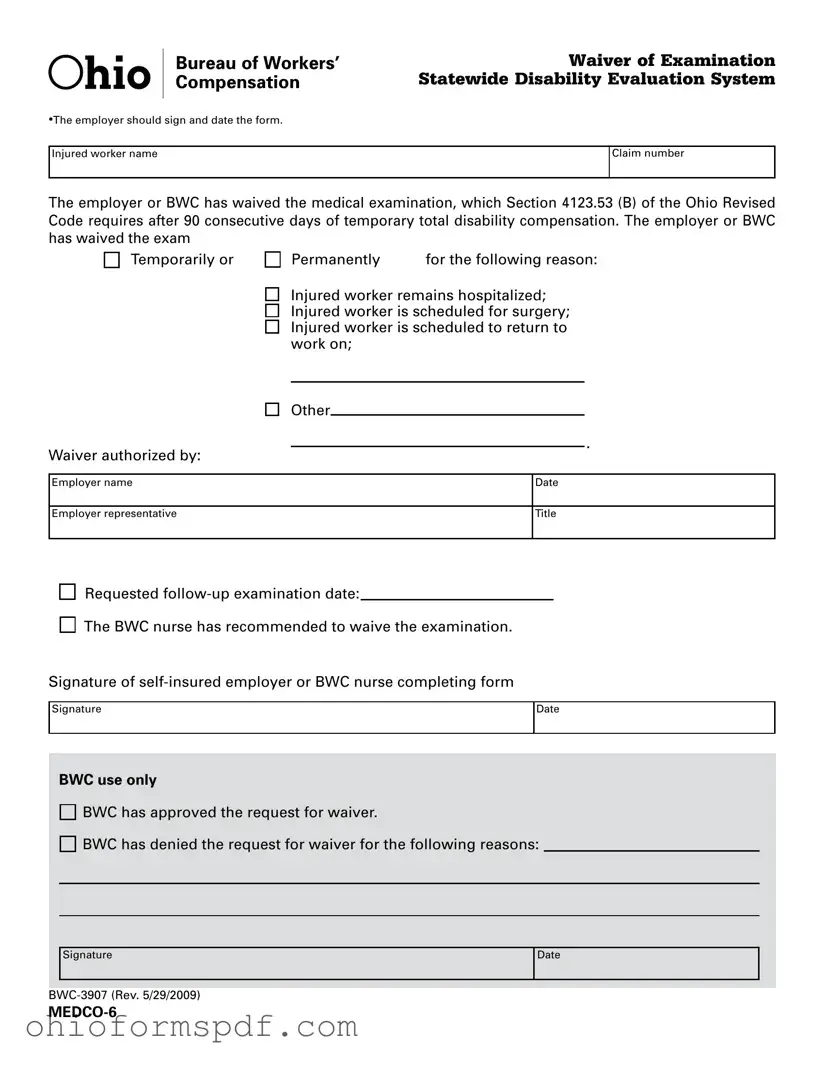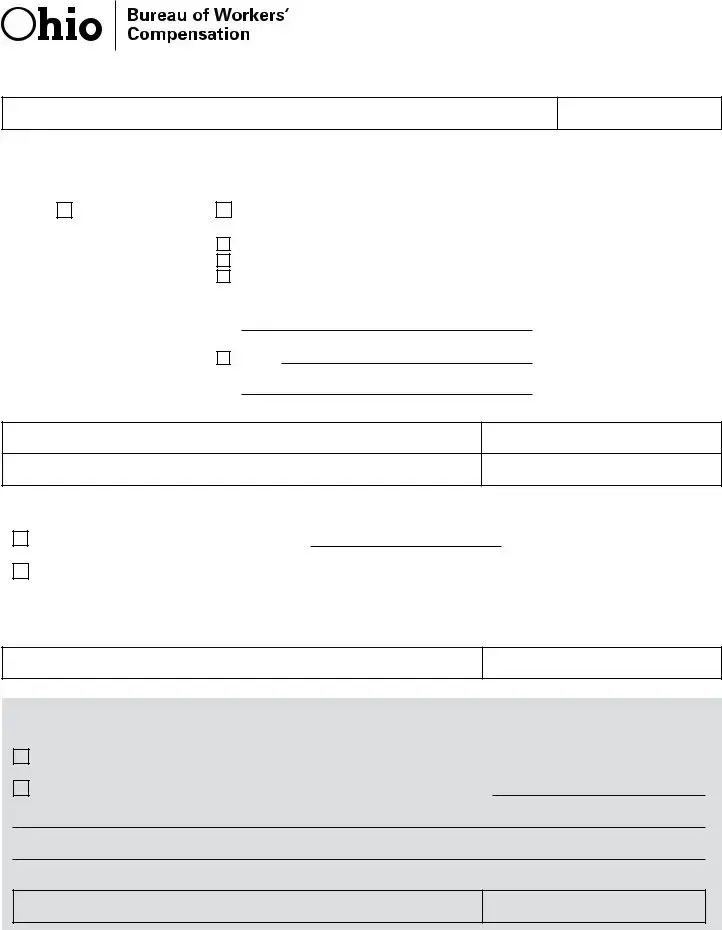What is the purpose of the Ohio BWC 3907 form?
The Ohio BWC 3907 form, known as the Waiver of Examination for the Statewide Disability Evaluation System, serves a specific purpose. It is used when an employer or the Bureau of Workers' Compensation (BWC) decides to waive the standard medical examination required for an injured worker who has been receiving temporary total disability compensation for more than 90 consecutive days. This waiver can be granted for reasons such as the worker being hospitalized, scheduled for surgery, or set to return to work soon, among others.
Who needs to sign the Ohio BWC 3907 form?
The form requires signatures from specific individuals to be considered valid. The employer, or a representative of the employer, must sign and date the form, indicating their agreement to the waiver. Additionally, if the waiver is endorsed by the BWC, a nurse from the Bureau or a representative from a self-insured employer responsible for completing the form must also sign it. The final part of the form is for BWC use only, where the BWC indicates whether the request for waiver has been approved or denied, also requiring a signature.
What happens if the BWC denies the waiver request?
If the Bureau of Workers' Compensation denies the waiver request detailed in the BWC 3907 form, the injured worker must undergo the previously mandated medical examination required by Section 4123.53(B) of the Ohio Revised Code. The form will detail the reasons for denial, and the employer or injured worker may need to take further steps based on the BWC’s guidance to comply with the law or possibly contest the decision.
Can an employer fill out the BWC 3907 form on behalf of the injured worker?
Yes, an employer can initiate and fill out the BWC 3907 form on behalf of the injured worker. However, the employer must ensure that all the information provided is accurate and that the form is completed in accordance with the requirements set by Ohio's Bureau of Workers' Compensation. The process involves the employer detailing the rationale for the waiver and signing off on it, showing their verification and request for the waiver.
Is it necessary for the injured worker to agree to the waiver?
While the form primarily requires authorization from the employer or the BWC, it is crucial that the injured worker is aware of and agrees to the waiver of examination. Communication and agreement between the employer and the injured worker are essential to ensure that all parties are on the same page regarding the worker's recovery and return-to-work status.
What are the possible reasons for waiving the medical examination?
The Ohio BWC 3907 form outlines several specific reasons why the standard medical examination may be waived, including the injured worker being hospitalized, scheduled for surgery, or having a set return-to-work date. Additionally, there is an "Other" option, allowing for flexibility in situations that do not fit neatly into the predefined categories but are deemed justifiable by the employer or BWC for waiving the examination.
What should an employer do if the injured worker's situation changes after submitting the form?
If the injured worker's situation changes in a way that could affect the waiver (e.g., surgery is canceled, or the return-to-work date is postponed), the employer should promptly notify the Bureau of Workers' Compensation. Depending on the circumstances, it may be necessary to proceed with the medical examination or submit a new waiver request reflecting the updated situation.
How does the BWC process the waiver request?
For the Bureau of Workers' Compensation to process a waiver request submitted on a BWC 3907 form, it requires thorough review and verification of the information provided. The BWC evaluates the reasons for the waiver, the injured worker's current health status, and compliance with related legal requirements. After the evaluation, the BWC will either approve or deny the waiver request and notify the involved parties of the decision, with the form including space for the BWC's signature and date to indicate the outcome.
Where can one find the BWC 3907 form or obtain more information?
The Ohio BWC 3907 form can be obtained through the official Ohio Bureau of Workers' Compensation website or by contacting the BWC directly. The website also offers detailed guides, resources, and contact information for further assistance. Additionally, employers and injured workers may consult with a legal professional or a workers' compensation expert to ensure they complete and submit the form accurately and in compliance with Ohio law.

